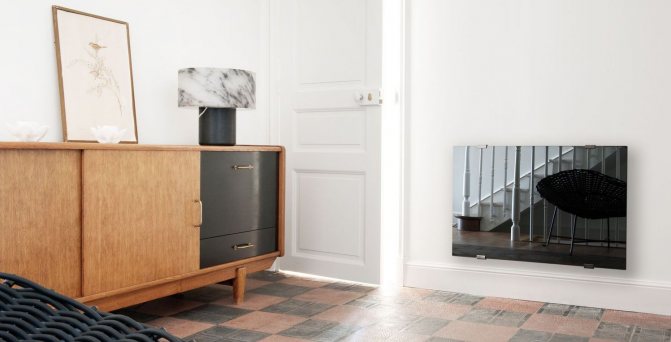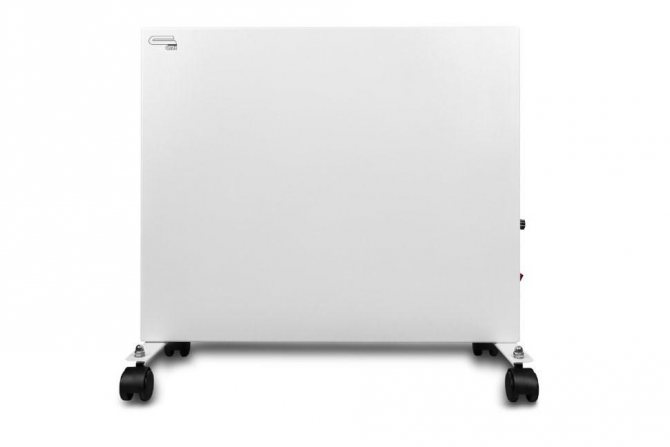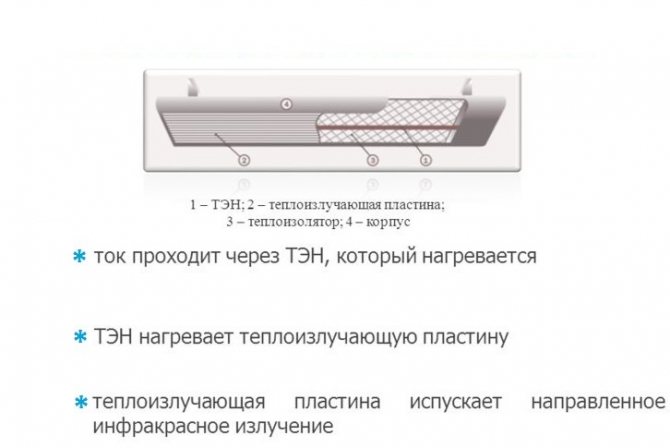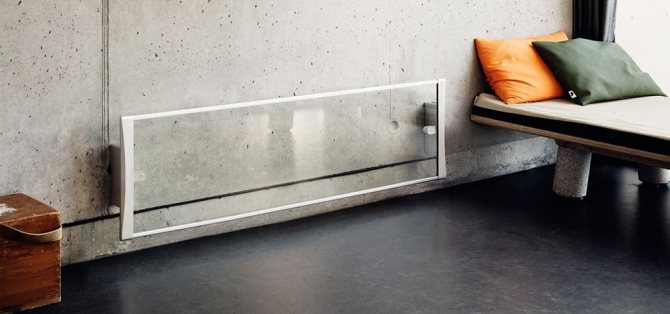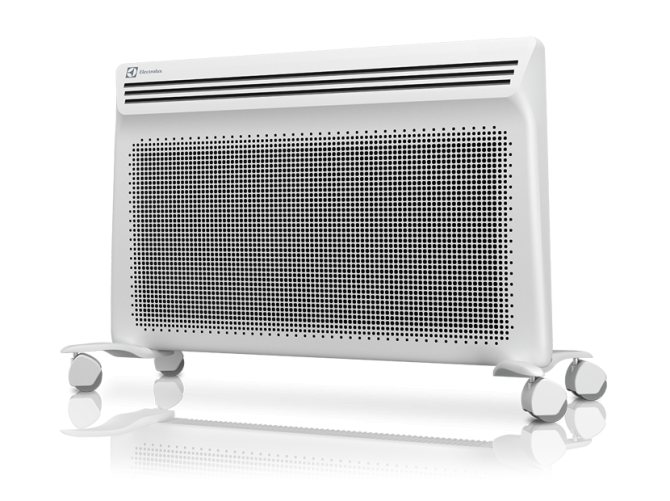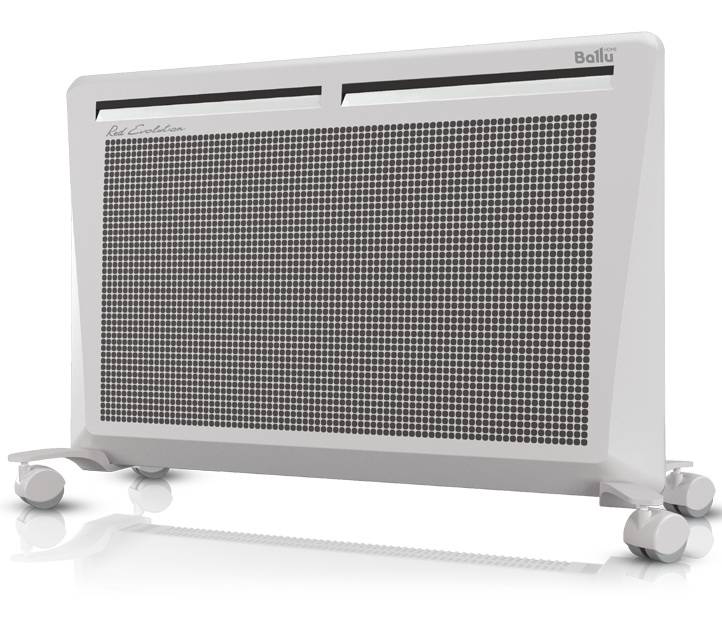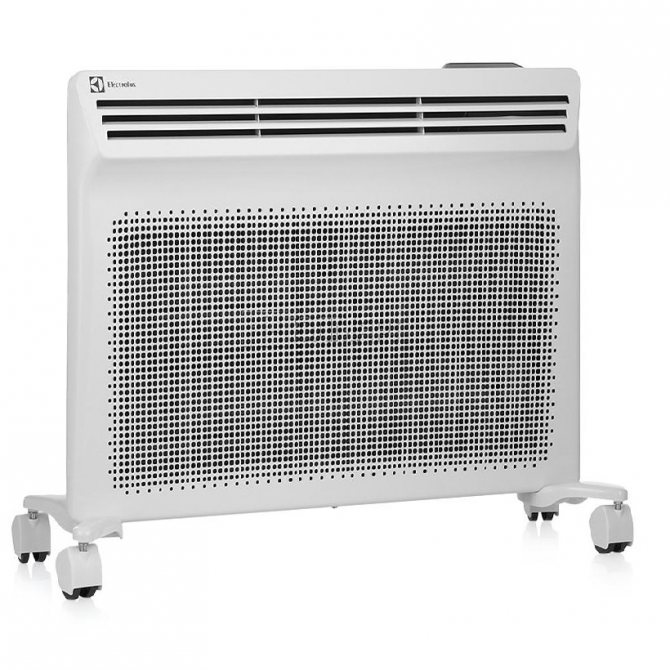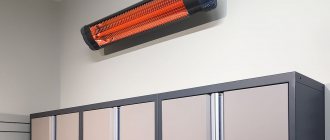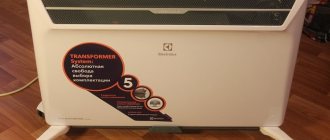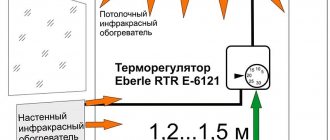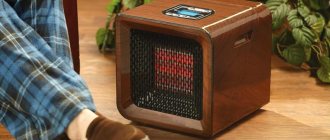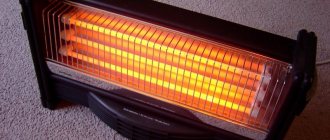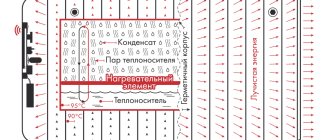Convective infrared heaters have recently appeared on the heating market, but this does not make them less popular.
The onset of cold weather makes you think about buying effective devices for heating the room if the main heating system is a little less than ideal. Mobile heat devices will do.
About the equipment, the operation of which is based on convection, IR radiation, is described in the article.
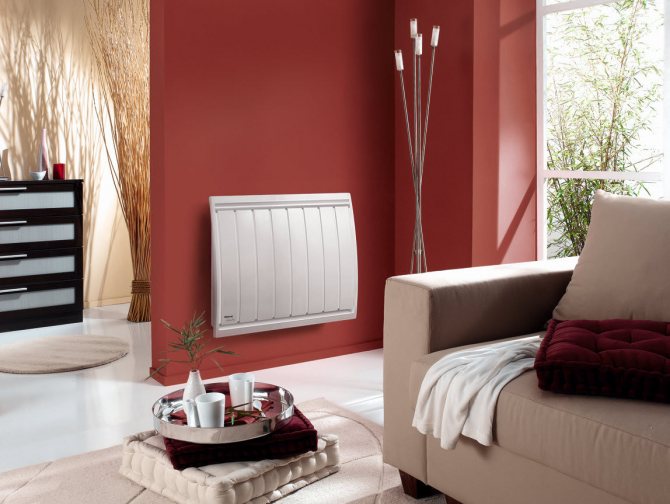
Interior
Historical reference
Situations often arise when the installation of additional heating equipment is necessary. For example, when the heating system is not powerful enough to heat the room, or it is cold winter outside the window.
Many are trying to make homemade devices. Previously, the simplest fan heaters were used, in some houses the devices were preserved, called in the common people "goats".
With the onset of the 90s of the last century, electric convectors began to appear on the shelves. The production of these devices was carried out abroad, the equipment was expensive.
The devices were hung on the wall. The device is easy to operate, does not consume a lot of electricity.
Convective, convective - infrared, infrared designs have appeared on the market. The devices are even more economical, compact, and simple.
Overview of the characteristics of infrared convectors: power
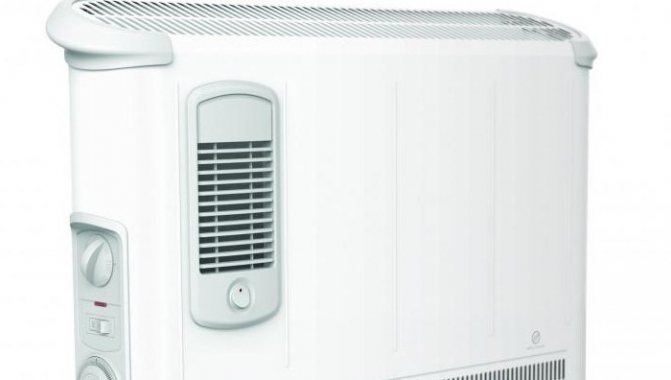

If you want to choose an infrared convector, then it is important to pay attention to the most important characteristic - power. This parameter is selected from the algorithm of 1 kW of device power for every 10 m2. If you plan to use the described unit as the main source of heat, then it is advisable to choose a device with a power reserve in order to compensate for possible heat losses that go through doors, windows and walls.
There are models on the market with a power of 300 watts. They can be used for temporary local heating of garages, basements and other utility rooms. For more efficient operation, it is best to place such devices closer to the person. An imported infrared convector is most often designed for power supply from a 240 V network, therefore, when connected to a standard network, the device will not work at full power. This factor must be considered when buying. Heaters of this type can be electric or gas, the latter type is optimal for heating large areas, such as terraces and verandas.
Overview of varieties
Types of heating devices:
- Fan heaters. Placed on the floor. The work consists in blowing heat around the room with a fan located behind the heating elements. At the same time, the fan and the heating element are turned on, as the temperature rises by the heater, the air becomes hotter. Heating the room is faster than many other devices.
- Oil radiator. The heat carrier is mineral oil. Devices differ in power, content, dimensions. The equipment heats up for half an hour, the thermal relay is triggered, the system turns off. Necessary for security reasons. Oil radiators are panel, sectional.
- Heat gun. Structures differ in purpose: industrial, household. The main task is to heat a large area - a garage, a utility building. Heat guns are expensive.
- Thermal curtain. The main installation location is above the doorway. The device is capable of heating small rooms.The task of the heat curtain is to prevent cold air from entering the room. The device is relevant for rooms where the door faces the street, cold air masses constantly come in.
- Convector.
- IR heater.
Which is safer for your health
If you are allergic or asthmatic, or have a small child in your home, I would advise you to be careful with convector heating. In small enclosed spaces - where this type of heating works best - the air will dry out mercilessly.
On the other hand, the infrared emitter, although it allows you to maintain optimal humidity, is not designed for small rooms and can be dangerous for an infant if placed in the immediate vicinity of the crib.
There are two ways out:
- Operate the convector by regularly humidifying the air. Or buy a model with a built-in humidifier / ionizer.
- Use a ceiling infrared heater as a home "sun", strictly at the same time, making sure that the baby does not overheat.
Adults are also better off avoiding overheating or drying out the air. Therefore, whichever heater you choose, observe the operating conditions and do not disclaim responsibility for your own health.
Electric convectors
The electric convector resembles an ordinary radiator. Operates from the mains, does not have a supply for the coolant.
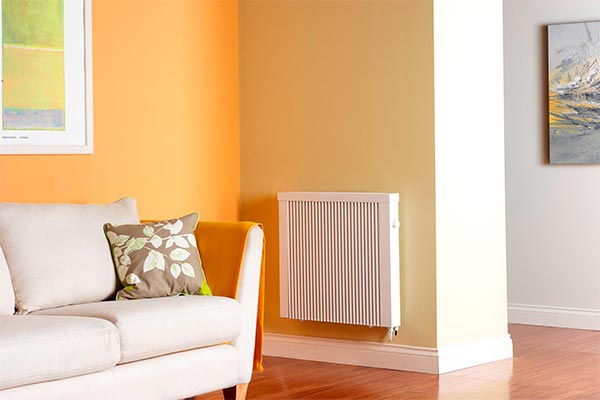

Electric convector
The convector works off-line. There is no need to lay pipes for the coolant, an electric boiler, an expansion tank - something that requires water heating. The convector heats up the air and creates continuous circulation. The heat is evenly distributed throughout the room.
The advantages of electric convectors:
- Thanks to natural air circulation (convection), the maximum heating effect of the room is achieved.
- The device is compact, can be carried, put away for the summer.
- The device can briefly replace the main heating in the event of a shutdown.
- The electric convector does not affect the microclimate in the house, does not dry the air.
Among the minuses, I would like to note the following:
- Together with the convection of warm air, the dust being lifted up is distributed.
- High electricity costs.
IR heaters
They differ in the principle of operation. IR rays do not heat the air, but objects - floors, walls, furniture. Objects give off heat to the room. The principle of operation is very similar to the sun's rays.
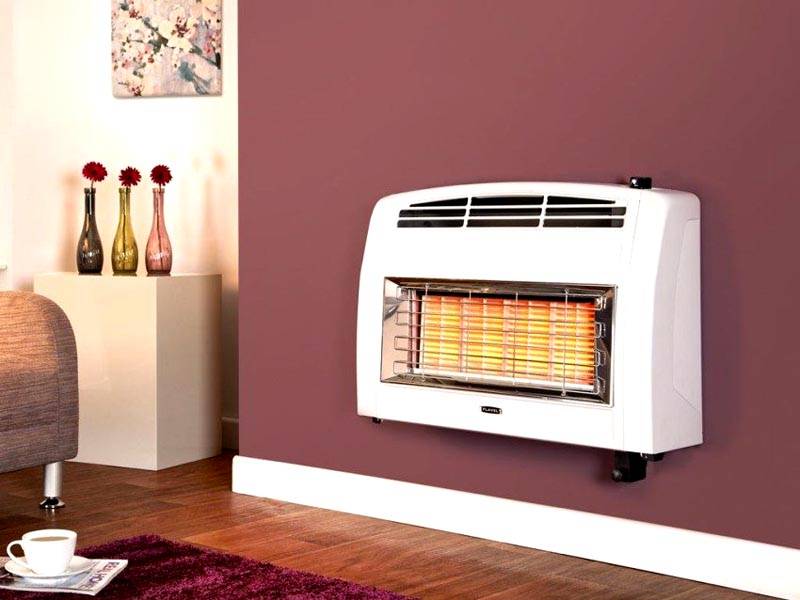

IR equipment
Maybe:
- Improving the quality of space heating.
- Reducing energy consumption.
- Reducing heat losses.
- Uniform heating of the room.
If you compare the device with a conventional convector, the efficiency of the IR emitter is higher. The first option heats up the air, which, having reached the ceiling, lowers the temperature by several degrees. The higher the ceiling height, the greater the difference between the air at the floor and at the top of the ceiling. An infrared heater heats objects, reducing heat loss.
Warm air gathers at the top, leaving a cold mass at the bottom, we feel the cold feet on our feet.
Source for work
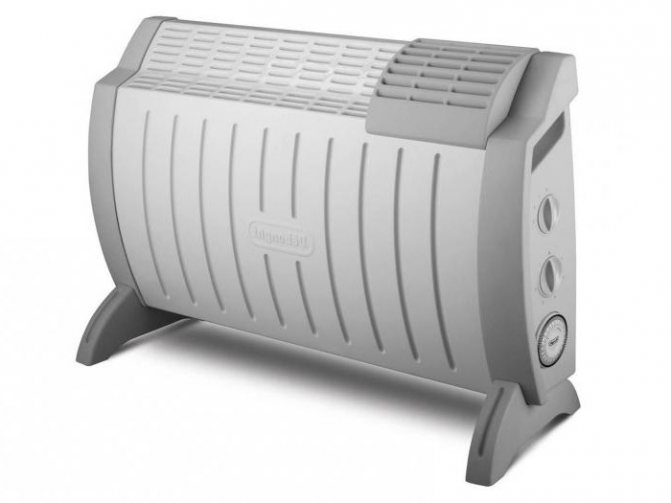

A gas-type infrared convector can have a source for operation in the form of an electric network or liquefied gas. The power of these heaters starts from 1.5 kW. By purchasing an infrared gas convector, you can count on direct or indirect heating. In the first case, the air required for the burner will come from the room and return with the combustion product. Therefore, when installing such a device, it is necessary to ensure the availability of an effective ventilation system. When purchasing a device with indirect heating, you will need a gas evacuation system.
If you are interested in a gas infrared convector, it is recommended to read reviews about it. Consumers claim that such devices work silently and have a well-thought-out security system.The units have two sensors, one of which is responsible for the oxygen level in the room, and in case of a deviation from the norm, it turns off the heater. The second turns off the device when the device is dropped or tilted. This is an excellent protection against fire in the room. The positive features of such devices include uniformity and speed of heating, environmental safety, efficiency and compactness. However, before buying a gas convector, you need to find out if this type of equipment can be used indoors.
Electric infrared convectors are available with a power of 1.5 kW, so they can be used for domestic purposes. The heater coil is made on a quartz base.
Convective infrared
Thanks to the decision to bring together two different heaters, the device has become even more efficient. The principle of operation of a convection device is to heat the air. Air flows passing near the heater heat up and rise. A cyclical movement is created, where cold air descends, warm, becoming lighter, rises.
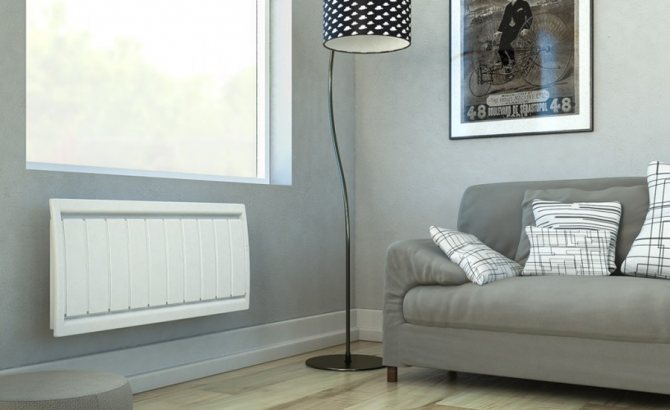

Convective infrared heater
The IR emitter heats objects. Gathering two devices together, it was possible to increase the efficiency, the air warms up faster.
Choosing between infrared heater and convector
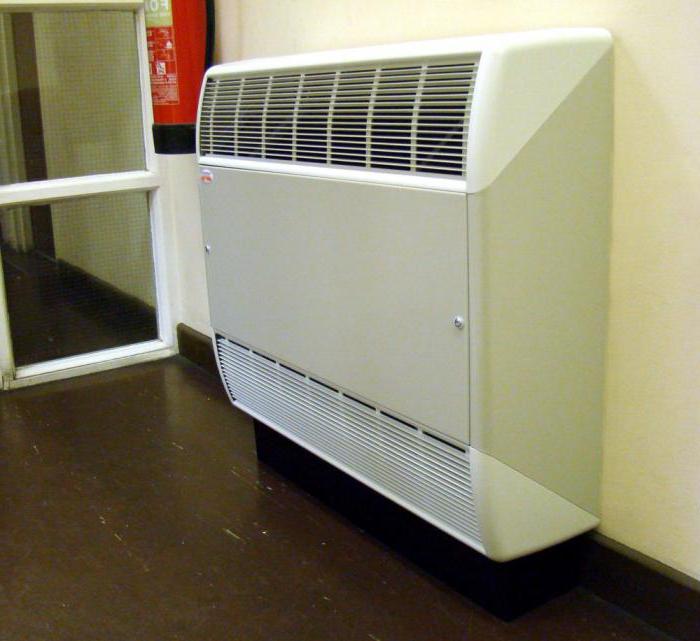

Quite often, modern consumers today do not know what to choose - an infrared heater or a convector. Which is better, you can understand by reading the article. It is worth recognizing that both of these devices are popular for suburban real estate. Electric convectors have proven themselves, appearing on the market since the 90s. last century. They are easy to use and easy to instruct.
Infrared heaters appeared only 5 years ago, today they are representatives of the latest generation of energy-saving appliances. If you also cannot decide what to choose - a convector or an infrared heater, then you should pay attention to the fact that the first type of device heats the room due to the constant movement of air flows. They arise due to temperature differences in individual areas of the room. This heats up one layer of air after another, which ensures a relatively uniform temperature.
As a disadvantage of such devices, one can single out the creation of a comfortable temperature only in a certain part of the room. Therefore, in search of an answer to the question: "An infrared heater or a convector - which is better?", You will be able to make the right decision only when you become familiar with all the features of these devices. For example, infrared devices heat a room by emitting heat fluxes with a clear directionality. That is why in the shortest possible period of time, literally in 10 minutes, the zone to which the rays propagate will acquire a comfortable temperature. In this case, electricity costs will be insignificant, which is especially noticeable when compared with convectors.
Electric convectors quite often also benefit from the fact that they can be fitted into almost any interior. Most often, such units are installed in a wall niche or on special legs to make the device mobile. If you are thinking about the question of which is better - a convector or an infrared convector, then you should pay attention to the fact that the last unit will work not only due to air flows, but also heating objects. Among other things, infrared heaters can even be installed in the bathroom. If they are placed on the surface of the ceiling, then the floors and tiles will begin to heat up in the room. Experts advise choosing convectors if you want to equip an autonomous heating system in the country.
Pros, cons
Pros:
- Long service life, versatility.
- Minimal heat loss.
- Profitability.
- Safety.
- Convenient design.
- Fast heating.
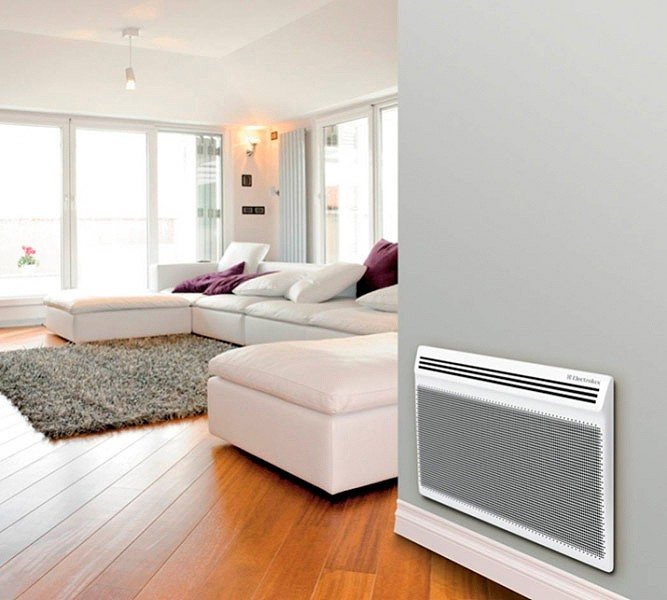

Convective IR device in the interior
Minuses:
- Burns oxygen.
- Cost.
When choosing a heater, you need to consider:
- area to be heated;
- the amount you have.
Saving on electrical appliances is unlikely to lead to a good result. The cheaper the device, the shorter the service life it has at its disposal. Quality can be limp.
Installation and dimensions
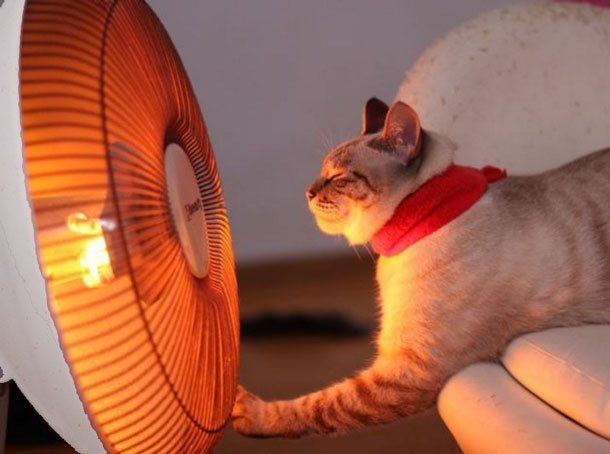

For most consumers, size matters. Especially if the device is purchased for a small apartment.
The standard parameters of convector heaters are at least 40X80 cm. But such devices are for an average area of 15 sq. M. - you need at least two. Or a bigger heater. When mounted on a wall, the dimensions of the convector do not interfere with free movement. But if it is on the floor, there is a risk that you will constantly bump into it.
Infrared heaters are much more compact. They can even be placed on the table. There are also larger devices. But they belong to ceiling models and do not take up functional space.
IR units also win in terms of ease of installation: they are mounted not only on the ceiling, but also built into the walls.

